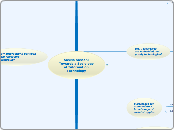Saskia Sassen: Towards a Sociology of Information Technology
Cyberspace isa concrete place
digital is not exclusivelydigital or non-digital
no pure digital economy
no complete virtual communityor corporation
national political system
Digi Tecnologiesare embedded, notpurely technological
complex overlapping btwmaterial and digtal
Hypermobility or de-materializationhave roots in production:capital mobility v. fixity
Digitization = amplification ofliquifying of what is not liquid.
100 years ago place-boundedness = form of immobility.
Today material world hashypermobile components
real estate
financial markets
deeply influenced by culture
lack any meaning or referents if we were to exclude the world outside cyberspace.
mediating cultures btwtech and users
expressed by embedded values, cultures, power systems, and institutional orders
destabalizing of existinghierarchies of scale
National scale loses significance
To continue to think of this as simply local is not very useful.
loss of formal authority
other scales gain importance
cross-border network of global cities
Cyberspace canaccomodate a broad range of social struggles
Subtopic
Subtopic
intro
technical features and standards of software/hardware
distributed networks
properties
interconnectivity
simultaneity
decentralized access
network power is notinherintly distributive
cheaper the delivery ofaccess the more access tolower income peoples
the Internet is a space produced and marked through the software that shapes its use and the hardware mobilized by the software
indicator of transformationsbtw e-space and physicalinstitutions
trends
Internet software design focuses in the last few years has been on firewalled intranets for firms and encrypted tunnels for firm-to-firm transactions.
less production of software aimed at strengthening the openness and decentralization of the Net
social structures
private space
financial inst.
public space
e-space is crucial for new formsof civic engagement
non-comm. work dominatesteh internet
powerdynamics
infrastructure and access
internet, powerful mediumfor non-elites to comm.
1. Embeddedness of Digital Technologies
Digital/Material Imbrications
Mediating Practices
Destabilizing of Older Hierarchies of Scale
2. New Interactions Between Capital Fixity and Hypermobility
Information technologies have not eliminated the importance of massive concentrations of material resources
Saski notes that the digital is bound with the material;the example she uses is finance, a discipline that is largely digital but needs buildings infrastructure, material stuff to "finance"
digital activites still "weave back and forth between actual and digital space"
economic activites are both centralized, e.g. Franfurt market and dependent on global networks e.g. Frankfurt market
no fully virtualized companies
a back and forth betweendigital and real-space
3 aspects of interactionof mobility and fixity
Social Connectivity &Central functions
geographic dispersal of economic activities
strengthen importance of central coordination and control
meaning of information
datum
non-standardized data sets
requires social infrastructure
technical infrastructure can be reproducedanywhere, but no the social
urban centers provide the mix of resources and the social connectivity
Locational Patterns
highly standardized products/services see an increase in their locational options
headquarters to locate anywhere so long as they can access a highly specialized networked service sector somewhere
firms rather than large corporate headquarters which are at the core of economic global city functions.
specialized service firms more place-bound than the hypermobility of their products
Spatialities of Center
not simply a continuation of older patternsof spatial concentration
no longer a simple relation btw centrality & geographic areas as downtowns, or the central business districts
‘center’ can assume several geographic forms,
operating simultaneously at the macrolevel.
center can extend into a metropolitan area in the form of a grid of nodes
highly specialized circuits connecting sets of cities
centrality being constituted in electronically generated spaces.
3. Women's Cyberpresence/Cyberopportunities
underrepresentation
account for less than halfof all internet usage
rapidly rasiing their share
contradictory features
limits of cyberspace to bringabout change in exisitng hierarchies
new opportunities
women & e-business
home settings
socio-political implications
lateral/horizontal communication
coallaboration
solidarity
support
potential to change local 'micro'environments through connectivity
enable women to pursue projectsnot easily accomidated in localenvironment
possibilities
can be local yet open to largergroups beyond physical neighborhood
access to situations with NGO'sthey neve had before
Long-Tail, niche markets can findtheir people
4. Citizen Networksin Global Digital Age
Notion of local
Local inititives become part of global network
Information
political work
strategies
Neighboring Communitiesaware of each other
Non-Elites
Communicate
Support
Create insider groupsat scale
Historically excludedgroups can find cyberspacean enabling environment
women both locally and globally
Non-Governmental Organizations (NGO)
local communities/city neighborhoods
non-political actors
